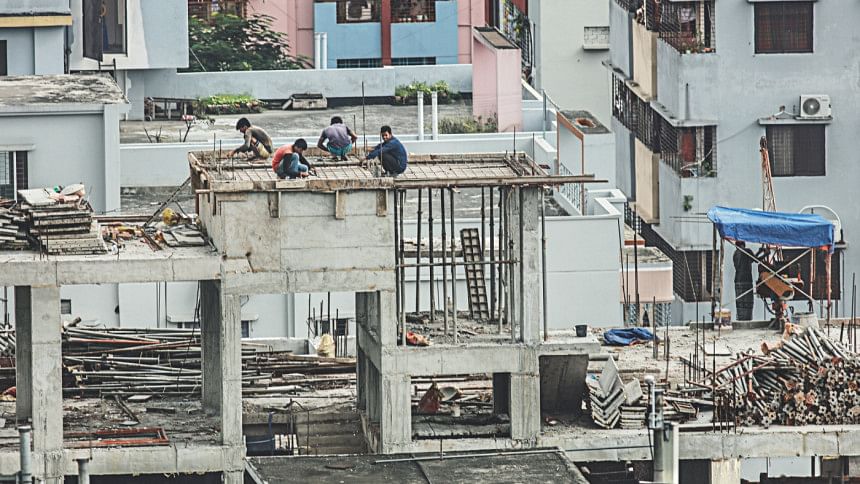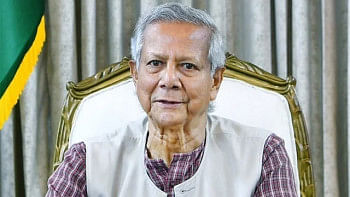Integrity the key to safe construction

In 1905, construction began of a palatial house in Dhaka. That resplendent Mughal architecture-style building today is known as Bangabhaban, the official residence and principal workplace of the president of Bangladesh.
Around the same time, work commenced nearby to erect a town hall-style building that later became known as the Curzon Hall and home of the faculty of sciences of the University of Dhaka.
A few years later, over in Ishwardi, construction started for a 1.8 kilometre-long steel railway bridge over the River Padma. Christened Hardinge Bridge after the then-Viceroy of India, trains started moving on it in 1915 and are still passing through.
Relics from the British Raj-era, these structures are standing strong still, more than 100 years later -- with their beauty and architectural design intact.
“These are examples of quality construction,” said Khan Mahmud Amanat, a professor of the civil engineering department at the Bangladesh University of Engineering and Technology.
In contrast, almost 100 years later, in 2006 Sohel Rana and his father built an eight-storied building on a filled-in pond in Savar using substandard construction materials. The building, named Rana Plaza, caved in on April 23, 2013 killing 1,134 and injuring thousands.
“It all depends on the integrity of the builders. If they use quality construction materials the duration of the building will be 100 years,” he said, adding that there are hundreds of thousands of substandard buildings in Dhaka city alone.
And this is not because of want of quality construction materials available locally.
There are five steel rod and eight cement manufacturers that maintain global standards, according to BUET that conducts tests of the quality of construction materials from time to time.
“Those local companies follow all the processes to maintain quality.”
For a durable construction cement should make up 16.4 percent of the raw materials and steel 24.6 percent, according to Amanat.
So, for a 1,000 square feet apartment, 400 bags of cement and four tonnes of 60-grade steel rods are required.
The cost would come to Tk 3,000 per square feet for the first 10 storeys and Tk 7,000 for the next 10 storeys.
But many cost-scrimping unethical realtors use lesser amounts and in so doing compromise on the longevity of the structures.
“Proper usage of standard steel rod, cement, sand and stone as well as the developer’s integrity can ensure a high-quality building for future generations.”
In Bangladesh, not more than 25 percent of the buildings are of world-class quality.
“The rest are substandard and longevity will be at best 30 years,” Amanat said quoting BUET tests.
Alamgir Shamsul Alamin, president of the Real Estate and Housing Association of Bangladesh (REHAB), however, begs to differ.
“REHAB members are committed to ensuring the safety of the building. We always instruct our engineers and architects to ensure safety and environmental factors during preparation of the building design.”
To further his point, he said there is no record of collapse of buildings made by developers from earthquakes.
“Of course, we at REHAB emphasise on honest business practices and quality apartments and denounce making money unethically and by cutting corners,” Alamin added.
Meanwhile, a top official of a steel manufacturer told the correspondent upon condition of anonymity that not more than five manufacturers follow the proper methods to manufacture steel rods in Bangladesh.
“They do so to minimise production costs and make more profit,” he added.
Quality steel is mandatory to ensure longevity of a building, said Tapan Sengupta, executive director of BSRM, a leading steel maker.
His company follows the complete process of steel making with a controlled automation system.
“We do 100 percent refining of liquid metal through secondary metallurgy and other process to make steel free of all impurities and gasses before sending the liquid metal fully covered to the continuous casting machine for close casting of billets.”
When billets get cold it is checked again thoroughly before dispatching to rolling mills for rolling. It is then rolled into rebar in a sophisticated state-of–the-art facility.
“There is no point of using low-quality steel for construction as it would not be earthquake resilient and the building will not be cost-effective,” he added.
Now, Bangladeshi manufacturers make world-class cement, said Mohammed Amirul Haque, managing director of Premier Cement.
“The world-renowned construction firms that are making Padma bridge and Rooppur nuclear power plant are using local cement. If the quality of Bangladeshi cement was not up to the mark they would have imported the material.”

 For all latest news, follow The Daily Star's Google News channel.
For all latest news, follow The Daily Star's Google News channel. 



Comments